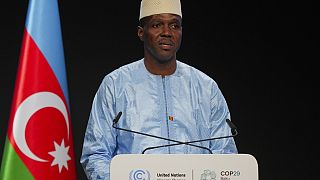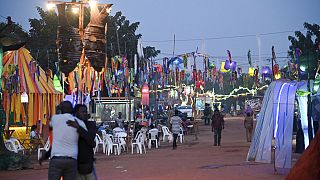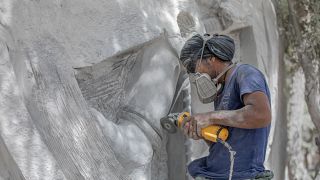Burkina Faso
In 2000, farmers in Burkina Faso, Africa’s top cotton grower, were desperate.
Their cotton fetched top prices because its high-quality fibre lent a luxurious sheen to clothing and bedsheets. But pests , bollworms were threatening the crop.
Even when you dropped the bollworm larvae into a bucket of poison, farmers said, they kept swimming.
U.S. agro-chemical company Monsanto proposed an answer: a genetically modified strain of cotton called Bollgard II, which it had already been introduced in America and was being marketed worldwide.
Monsanto’s GM was established in large-scale farming in South Africa, but not among the smallholders who produce most African cotton. The Burkina farmers agreed to a trial and the country introduced seeds with a genetically modified gene in 2008.
The resulting cotton was pest-free, and the harvest more abundant.
By 2015, three-quarters of all Burkina Faso’s production was GM, and it became a showcase for the technology among smallholders in Africa. From 2007 to 2015, delegations from at least 17 different African nations visited Burkina to see it.
But there was a problem. While the bug-resistant genes produced more volume, the quality fell. Last season, the cotton farmers of Burkina Faso abandoned the GM varieties.
“Truthfully, genetically modified cotton, it’s not good today. It’s not good tomorrow. When you produce genetically modified cotton in your farm, after two years, you cannot plant anything else on your land,” said farmer Paul Badoun.
The country’s GM experience, told by more than three dozen Monsanto insiders, farmers, scientists and cotton company officials as well as in confidential documents reviewed by Reuters, highlights a little-known quandary faced by genetic engineering.
For Burkina Faso’s cotton growers, GM ended up as a trade-off between quantity and quality. For Monsanto, whose $13.5 billion in revenues in 2016 were more than Burkina Faso’s GDP, it proved uneconomical to tailor the product closely to a market niche.
The Burkinabes knew from the start that American cotton varieties containing Monsanto’s gene could not deliver the quality of their home-grown crop, cotton company officials and researchers told Reuters.
But they pressed on because Monsanto agreed to breed its pest-resistant genes into their native plants, which they hoped would protect the cotton and keep its premium value. That, they say, was a failure.
Cotton quality is most commonly determined by the length of the fibre, or staple, that emerges when a tuft is pulled out of a cotton boll. The longer the fibre or staple, the higher the quality.
Monsanto’s American Bt cotton produced short fibres, the kind typically used to make fabric for everyday use such as jeans and t-shirts.
In the three seasons before Burkina introduced Bt cotton, over 90 percent of its output was classed as high quality long- or medium-staple by the country’s cotton companies.
In 2010-2011, GM cotton made up over half of production, but only 21 percent of the crop reached the previous quality standard.
“We wanted to increase our production, so that is one of the reasons why we decided to use genetically modified cotton in our country,” Burkina Faso Agriculture Minister Jacob Ouedraogo told Reuters.
In July 2015, Monsanto wrote to the Burkina growers saying the quality problems had been offset by other benefits.
Asked by Reuters about the quality problems and whether it promised to fix them, the company did not respond.
Instead, it pointed to a dispute that erupted with Burkina Faso over payments for seed-licensing fees.
Monsanto paid nearly $3 million in compensation to the Burkinabes in those first two seasons due to the quality problems, according to the memo reviewed by Reuters, which was sent in 2015 to complain about losses cotton companies had incurred. Monsanto declined to comment on this point.
Burkina Faso’s cotton continued to suffer. In 2014-2015, average Bt cotton fibres from around the country were up to 2.29 mm shorter than the conventional strains. The cotton lost its premium pricing. The impact, according to the Burkinabes, was a drop in the value of its output of at least 3 cents per pound of cotton, or between 2 and 5 percent of the volatile global benchmark price.
Monsanto, which has agreed to a $66 billion take-over by Germany’s Bayer, told Reuters its genetic traits transformed Burkina Faso’s cotton sector, improving the lives of 350,000 farmers and the roughly 4 million Burkinabes who depend on them, by increasing production and reducing pesticide use.
For Burkina Faso’s farmers, Bt cotton’s benefits were “barely acceptable,” according to a 2016 study by the French government’s agricultural research agency, CIRAD. It found farmers made more money, but the new seeds also increased their financial risk.
“As farmers, we always stick to what works for our production. We would rather work hard and harvest a lot rather than working less and harvesting more. The genetically modified cotton allowed us to work less but the fiber that we harvested was much shorter and lighter compared to the conventional cotton, which is much more demanding to farm but give us a more satisfying harvest. That is why we prefer conventional cotton seeds,” said cotton farmer Sounkalo Djobo.
Burkina Faso is now clawing back its reputation.
In the 2016-2017 season, the first since it returned to conventional cotton seeds, 98.8 percent of its production was graded as medium to long staple. So far, the bollworms have not returned.
If they do, Burkinabe officials say they aren’t turning their backs on GM, although the country does not use the technology at present.
However, they say, any varieties must fit their unique needs.











11:05
Africa's hight cost of climate change [Business Africa]
01:42
Niger: Conference in solidarity with the Alliance of Sahel States
01:17
COP29 finance talks lag as the summit reaches its halfway mark
01:38
COP29: What next for Africa's energy transition?
01:00
Civil society takes center stage at Brazil’s G20 social summit
01:58
Climate adaption: Unfulfilled pledges mean “lost lives and denied development” – UN chief